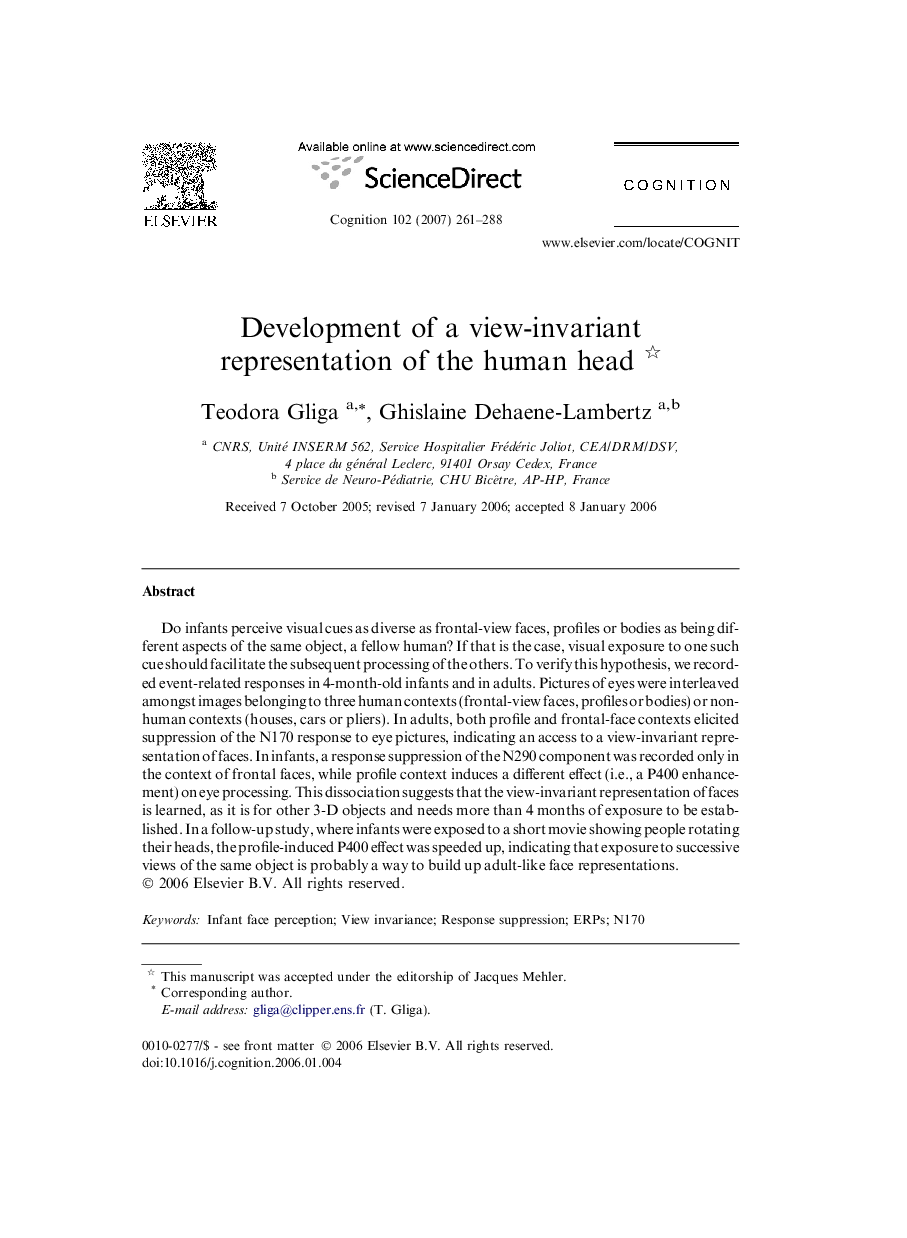| Article ID | Journal | Published Year | Pages | File Type |
|---|---|---|---|---|
| 10457825 | Cognition | 2007 | 28 Pages |
Abstract
Do infants perceive visual cues as diverse as frontal-view faces, profiles or bodies as being different aspects of the same object, a fellow human? If that is the case, visual exposure to one such cue should facilitate the subsequent processing of the others. To verify this hypothesis, we recorded event-related responses in 4-month-old infants and in adults. Pictures of eyes were interleaved amongst images belonging to three human contexts (frontal-view faces, profiles or bodies) or non-human contexts (houses, cars or pliers). In adults, both profile and frontal-face contexts elicited suppression of the N170 response to eye pictures, indicating an access to a view-invariant representation of faces. In infants, a response suppression of the N290 component was recorded only in the context of frontal faces, while profile context induces a different effect (i.e., a P400 enhancement) on eye processing. This dissociation suggests that the view-invariant representation of faces is learned, as it is for other 3-D objects and needs more than 4 months of exposure to be established. In a follow-up study, where infants were exposed to a short movie showing people rotating their heads, the profile-induced P400 effect was speeded up, indicating that exposure to successive views of the same object is probably a way to build up adult-like face representations.
Related Topics
Life Sciences
Neuroscience
Cognitive Neuroscience
Authors
Teodora Gliga, Ghislaine Dehaene-Lambertz,
